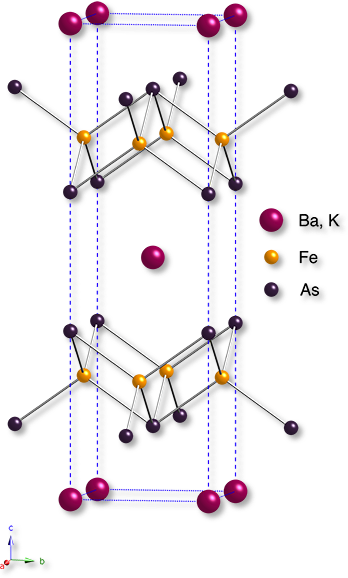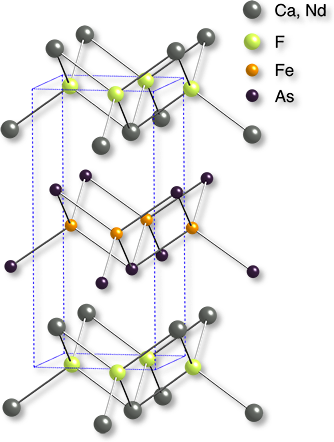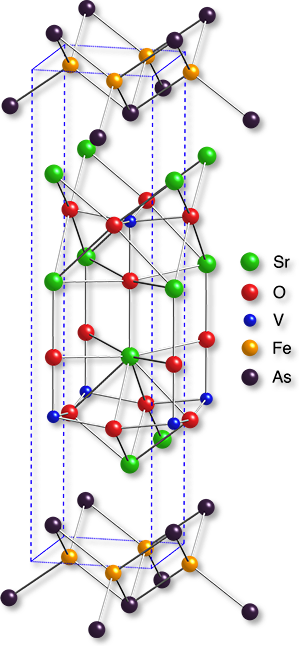Superconductivity research
My research interests used to lie in the area of solid state chemistry, especially in the synthesis of new inorganic solid state materials with interesting magnetic and electronic properties such as superconductivity. Some of these compounds are superconductors with high critical temperatures.
The discovery of high-temperature superconductivity in the cuprates in 1986 has caused an extensive search for new materials, which have zero resistance at temperatures above 40 K. It took 22 years until a new compound with these properties was discovered by Hideo Hosono in March 2008. This compound is the iron arsenide LaFeAsO1-xFx, which is a poor metal at room temperature and shows no resistance below 26 K (-247.15 °C). This discovery has immediately generated an enormous interest in the scientific community and within few weeks the so-called critical temperature (i.e. the temperature below which superconductivity occurs) could be raised to 55 K in a closely related compound. Apart from the cuprates, no other class of compounds shows zero resistance at such high temperatures, that is why these iron arsenides are often called a new class of high-temperature superconductors. The structure of a further superconducting iron arsenide, Ba0.6K0.4Fe2As2, is depicted on the right. This compound was first synthesised in my research group by Marianne Rotter, while I performed its physical characterisation. The crystal structure of this compound is even simpler than the structure of LaFeAsO1-xFx, both compounds however have the same key feature: slabs of edge-sharing iron arsenide tetrahedra. Not only its high critical temperature of 38 K, but also its easy synthesis and the possibility to grow large single crystals render this compound a promising candidate for both research and practical application. Especially interesting for the application in superconducting magnets (which are e.g. used in NMR spectrometers) is the very high so-called upper critical field (i.e. the magnetic field, where superconductivity breaks down) of more than 75 Tesla in Ba0.6K0.4Fe2As2. Therefore it seems very likely, that this iron arsenide superconductor (or a close relative) will replace existing low-temperature superconductors (with lower critical fields) in some areas within the next few years.
Meanwhile, lots of further iron arsenide superconductors have been discovered. All new iron-based superconductors with notable critical temperatures share the above-mentioned slabs of iron-arsenide tetrahedra. The record holder for the highest critical temperature of 57.4 K is NdxCa1-xFeAsF, its structure is depicted on the left.
But also more complex structures such as Sr2VO3FeAs with a critical temperature of 37.2 K (picture on the right) are of enormous scientific interest. They do not only show the vast diversity of the new iron-based superconductors but also give reason for hope to increase the superconducting transition temperature to temperatures above the boiling point of liquid nitrogen (77 K). This would facilitate much cheaper cooling of these superconductors and therefore possibly enable wide application in technology and everyday life.
Apart from the synthesis of these materials, I am also interested in their structure determination (e.g. by powder and single crystal X-ray diffractometry), as well as characterisation of both magnetic and electronic properties (by means of four-terminal sensing, SQUID magnetometry and neutron diffraction). Furthermore, I perform DFT calculations with Wien2K and STUTTGART TB-LMTO to calculate physical and structural properties in order to compare them with experimental findings or to calculate properties, which are not accessible experimentally.



